Thuja care rules in spring
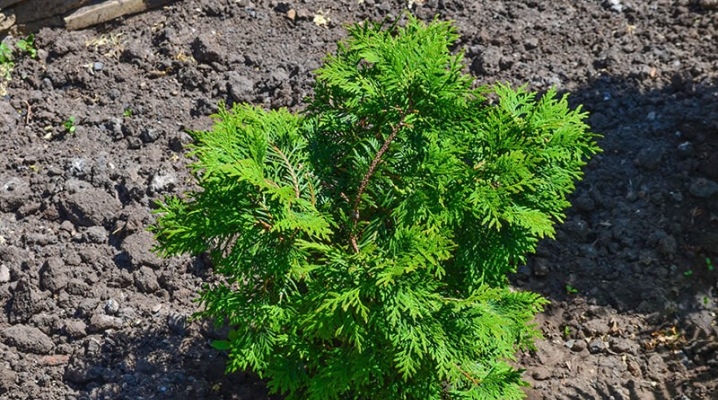
Thuja is a plant that is actively used in the organization of attractive landscape design. To make it look beautiful, the gardener is required to know when to shelter her from the cold, how to care for it, whether it is worth feeding.
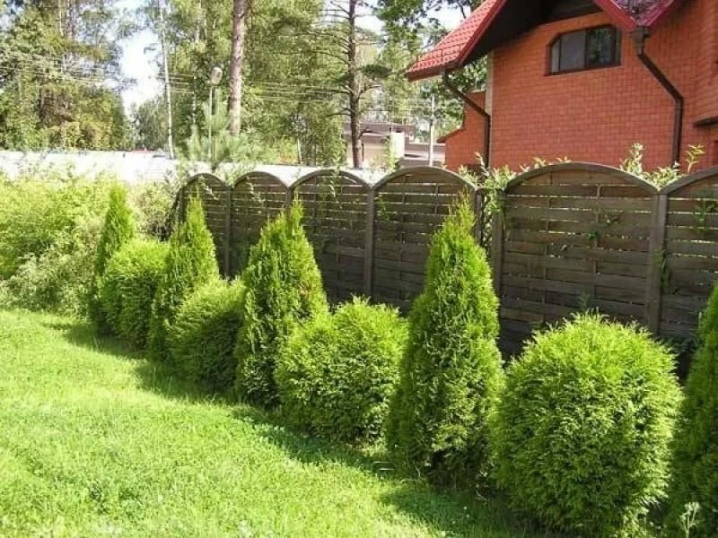
When to open thuja?
Thuja, although it belongs to conifers, can suffer from frost and freezing temperatures at a young age, so it is recommended to cover it with synthetic material. After winter, already in early spring outside, the air temperature becomes less critical, so even a young plant can already be removed from the shelter. It is advised to keep an adult plant until it leaves in the spring, because even in February in some regions of the country the sun on the street becomes quite active, the root system sleeps, because the earth is not warmed up enough, but the moisture from the needles evaporates. As a result, the plant loses a lot of moisture and can dry out. Damaged shoots will be impossible to restore, so it is better to cover the thuja with an impenetrable material.
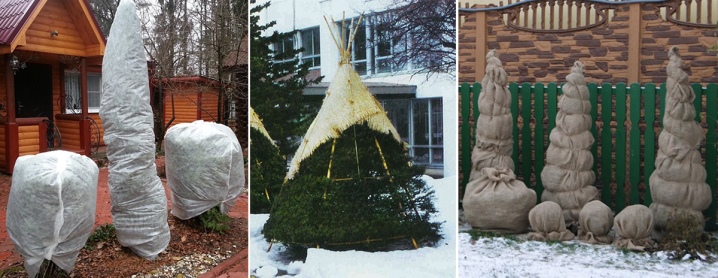
At the dacha, a tree is opened after the root system has woken up. In the first spring months, it is already able to provide the trunk and branches with the necessary useful minerals consumed from the soil and moisture. You can focus on deciduous plants on the site, if buds began to swell on their branches, it's time to remove the shelter. Before that, for several weeks in a row, when the sun is hiding behind clouds, it is better to open the thuja for several hours so that it can adapt to the sun. This is necessary because the tree was without light for a long time. His needles could lose color, but this is not scary, the shade will be restored.
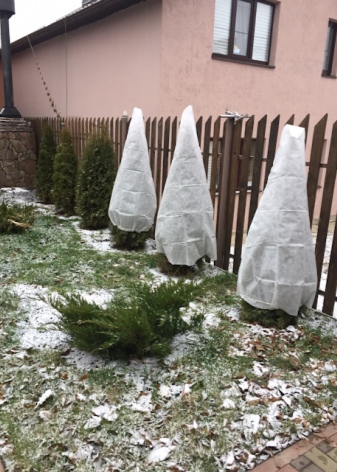

Transfer to another place
One of the advantages of thuja is that it can easily adapt to the proposed conditions, therefore, it takes root well in a new place, if the gardener transplants it in April according to the existing rules. The decorative thuja is popular for its attractiveness and longevity. It is highly regarded by landscape designers in the process of creating walkways and hedges. Young bushes can be planted in open ground in mid-spring, when there is no risk of frost, and the ground is already warmed up enough. And also planting is carried out in early autumn, before the first snow, the thuja has time to put down young roots. Some gardeners additionally try to root the first lower branches.

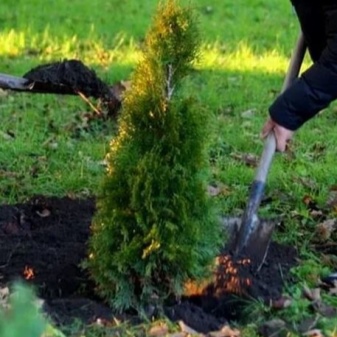
When transplanting, the place where it is planned to transfer the plant is of particular importance. Thuja does not like shade, since it belongs to light-loving trees. If the sun's rays act on its needles throughout the day, then the needles may begin to turn yellow, then dry. An ideal place for transplanting will be a site where the sun's rays fall on the plant in the morning, and at noon the branches are in the shade. It does not tolerate thuja and drafts, so it is worth planting it behind taller trees or a building.
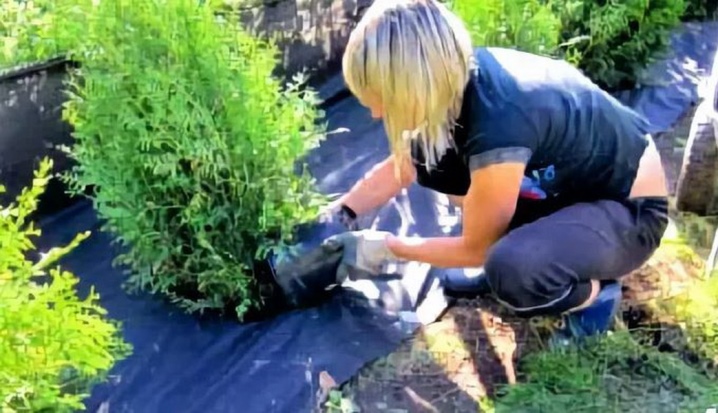
As for the quality of the soil, this does not really matter. The main thing is that the groundwater is not close to the surface, otherwise it will be necessary to organize high-quality drainage. The root system of thuja is superficial, it is very similar to mushroom mycelium. With an increase in humidity, it begins to rot.For the organization of drainage, you can use a special soil mixture. To create it, they use sod land, sand and peat.
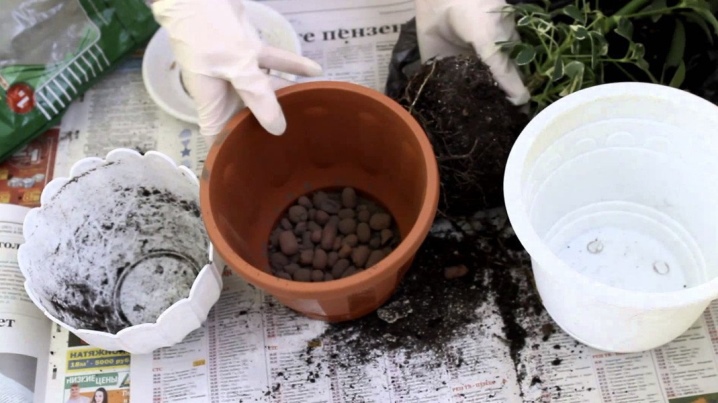
Before transplanting thuja, you need to prepare so that it does not suffer the change of position so painfully. Young bushes are always easier to transfer, since their root system is not yet so extensive. The soil around will need to be pierced with a sharp shovel, marking the border that determines the size of the root ball. Then it is necessary to slightly pry the thuja and remove it from the soil along with the soil. It is impossible to destroy the existing lump. By this time, the planting pit should already be prepared. The plant is immersed in it to the root collar and sprinkled with soil, after which it is watered abundantly.
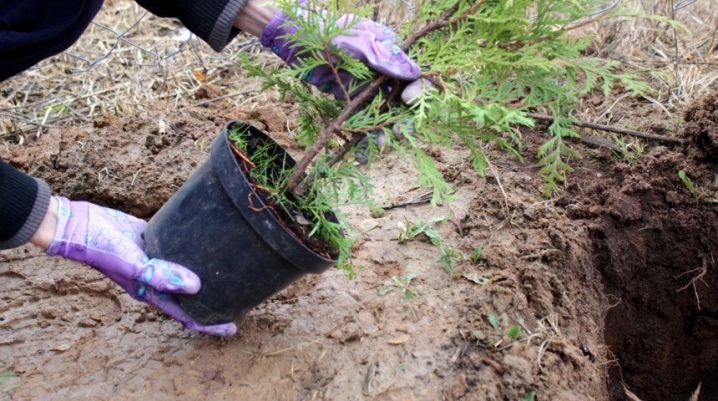
The preparation of large trees follows the same principle, only more hassle. Bayonet the soil 10 months before the planned transplant. This is necessary so that the plant can form new roots within the cut area. The planting process is as follows:
- preliminarily, a hole is prepared on a new site, the width of which should be 40 centimeters wider and 30 centimeters deep than the root ball; if you plan to transplant several plants at the same time, then the minimum distance between them is 1 meter, the maximum is 5 meters; thuja can grow well alone;
- before installing the tree, a prepared drainage soil is poured into the planting pit;
- thuja is placed strictly vertically and sprinkled with earth, after which the soil around is slightly tamped and watered.
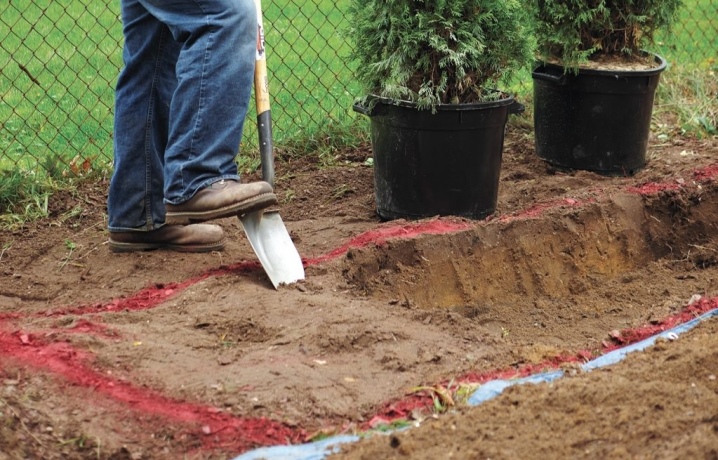
The trunk should be sprinkled high, and after watering, sprinkle the soil around with mulch. Such actions allow the plant to be prepared for wintering. The mulching layer should not fall on the lower branches and trunk, since interaction with the plant can lead to damping of its bark. In regions with heavy snowfall, branches are tied with twine, otherwise numerous precipitation can break them.
How to care for the soil?
The soil also requires proper care, although the plant is not too picky about type and quality. The first thing a novice grower should know is that the soil should be kept moderately moist, well fertilized and loosened from time to time. The better to care for the ground around the thuja, the more beautiful it will be. Weeds must be weeded. Once a month, the soil around will need to be slightly loosened, but you should not immerse the shovel deeply, since you can harm the root system. Loosening helps oxygen to penetrate better into the soil, moisture is absorbed faster and penetrates deeper. You can go deeper into the ground by no more than 10 centimeters.
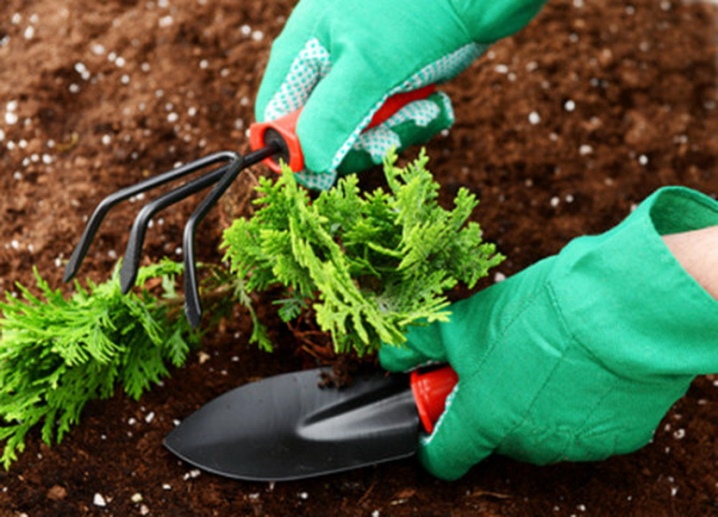
Weeds are the cause of many problems. They take nutrients from the soil, are often carriers of diseases, and act as a place of accumulation of numerous pests. In the southern regions of the country, it is advised to mulch the soil surface around the plant. Such a layer retains moisture better, so thuja does not suffer from a lack of water. The following are used as the covering material:
- humus;
- sawdust;
- compost;
- coniferous bark.
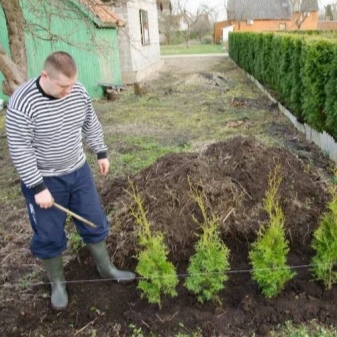
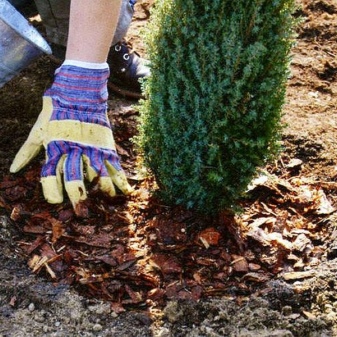
Important! Weeds do not grow under the mulch. As a pleasant addition, it enriches the soil with minerals and trace elements.
Watering features
Most experienced growers agree that it is better to water with warm water. The statement that watering is required only with the onset of heat is erroneous. In some regions of Russia, the heat becomes already in March, under the influence of the active sun, moisture begins to evaporate from the surface of small needles, so thuja requires water. While it is not too hot, watering the plant is required once a week, if the soil dries out faster, then it is possible three times. If the tree is from 3 to 5 years old, then a bucket of water is enough for it, for older plants - from 2 to 3 buckets. In the summer, the volume of the applied liquid should be doubled.

Sprinkling affects the development of young thuja especially well in summer.It allows not only to replenish moisture, but also to wash away dust from the surface of the needles. It is difficult not to notice how the aroma of the needles from the tree intensifies. The plant begins to grow faster. Spraying should be done in the early morning or after sunset. This can be explained very simply - in combination with active sunlight, small drops turn into lenses that cause irreparable harm to thuja in the form of burns.
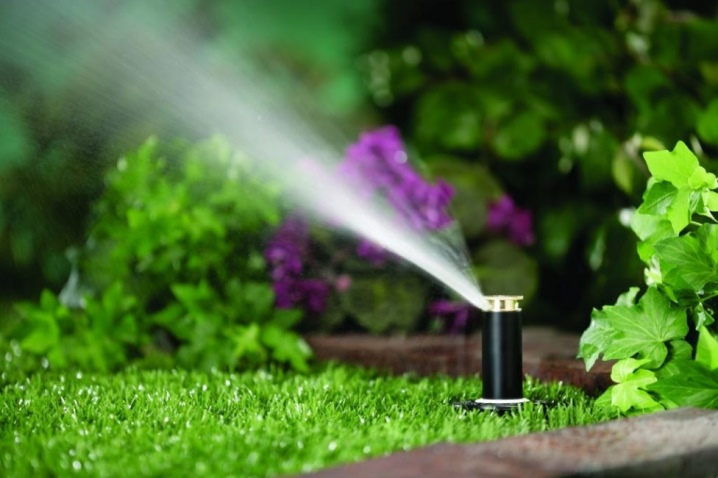
Rules for pruning and decorative haircuts
Pruning can be both prophylactic and decorative. In each case, the hair is cut differently. Shoots that begin to turn yellow, dry, must be removed immediately so that they do not pull on the nutrients consumed from the soil by the root system. They won't recover. The same applies to those areas of needles that have turned black. Such a change in color indicates the presence of a fungal infection.

Before you start trimming the thuja, the plant must be carefully examined. The branches are pushed apart, inspected inside, where the branches also die off and require pruning. Regardless of the type of pruning performed, the best time is April. Thin the crown in summer and spring, but it is allowed to remove shoots damaged by fungal infections at any time until they cause the death of the entire tree. Preventive pruning is essential as it helps improve air circulation inside. It is known that one of the reasons for the appearance of rot is a too dense crown in which the shoots are not blown, therefore destructive humidity remains.
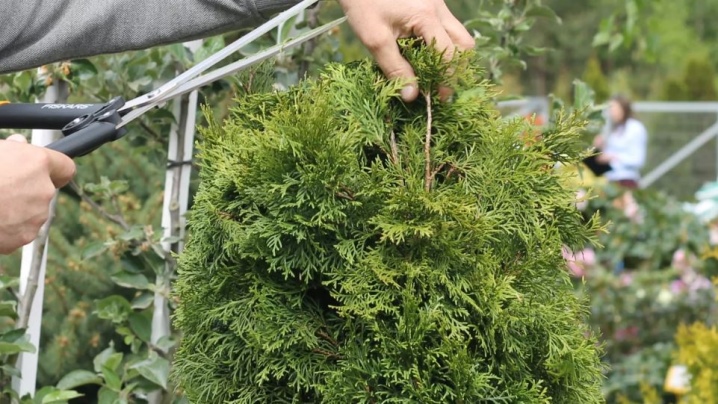
Experienced growers are advised to adhere to the following rules:
- cut off damaged shoots exclusively in dry weather; after the passed rain or before precipitation, they do not do this; if you neglect the advice, the crown can change its shape to an unattractive one;
- sick and dry branches are removed first, only after that they examine the thuja and do thinning; there is no need to remove many shoots, otherwise the crown will become bald;
- if you want to make the tree lush, then the side sections are not touched, only the top is cut off;
- plants growing in the shade do not differ in a dense crown, so there is no need for thinning.

Prophylactic pruning is required for mature plants every year. Saplings that are up to three years old should not be touched. The cut points must be treated with paste, which can be bought in a specialized store or with a garden varnish. Means "Zhivitsa" and Robin Green have proven themselves quite well. They contain pine resin, which protects damaged areas from infection.
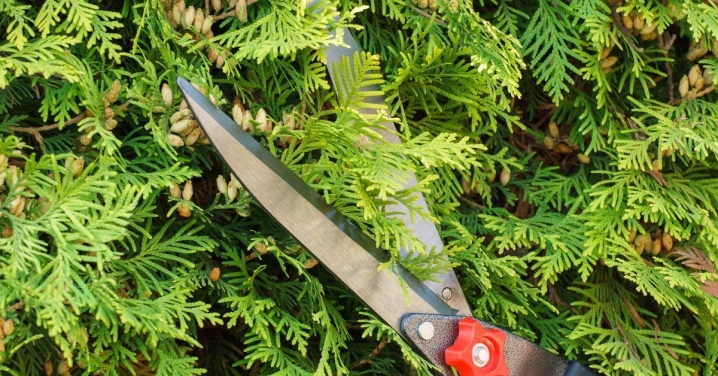
Decorative
It is produced in the following cases:
- not satisfied with the density of the crown;
- don't like the shape.
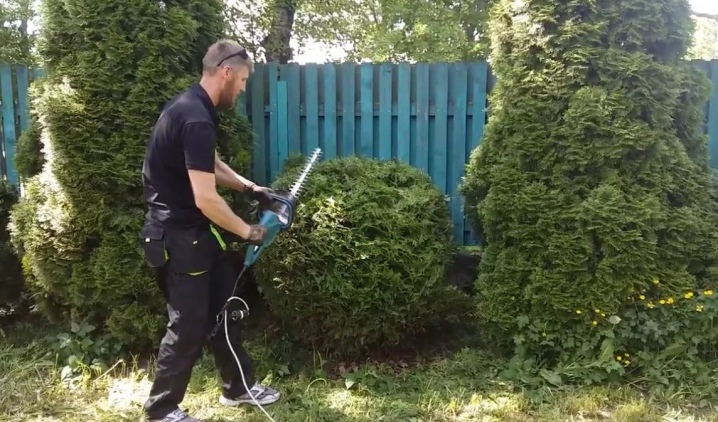
Pruning can be done once or twice a year, it all depends on the variety of thuja planted on the site. Some varieties increase the crown by 20 centimeters per year. In this case, excess shoots are removed in summer and spring. A single pruning is done when the crown grows a maximum of 15 centimeters over the same period. There are dwarf thuja, they are not touched at all, since the thuja already has a neat, even shape. The gardener may only be required to trim the shoots, which are strongly knocked out of the crown.
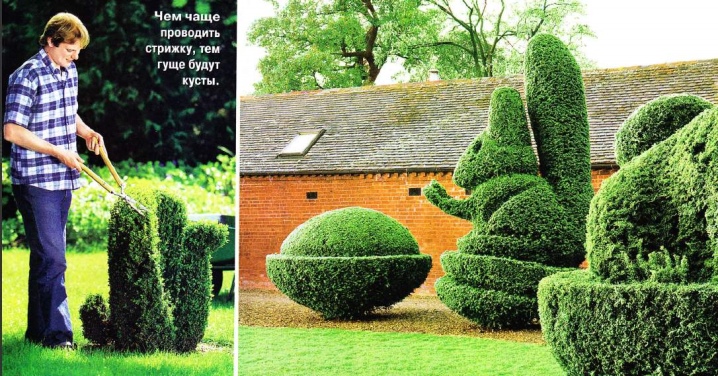
Experienced gardeners know that pruning timing is just as important as pruning quality. If the shoots are removed before bud formation, the vegetation will slow down. This should be used when removing old, diseased processes. If the main task is to build up green mass, then pruning is done after the thuja has faded.
Hedge
Cutting a plant when it is in a hedge is as easy as shelling pears. All the trees stand tightly to each other, the branches are removed only from two sides, and the side ones are not touched. Each thuja is cut from the top so that all are of the same height. You cannot remove more than 2/3 of the original size of the tree.
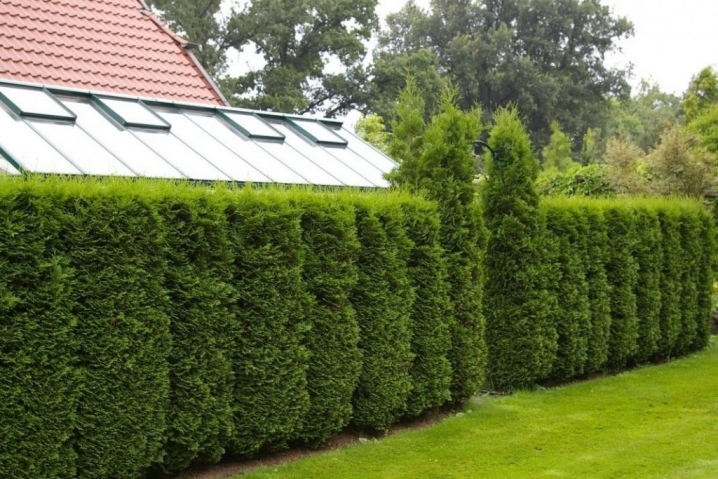
Topiary
This is one of the most difficult types of haircuts, but such trees are becoming more and more popular as part of decorative landscape design. The master gives the thuja various shapes, with the help of special scissors he can create any shape. Those who do not have the practice and necessary knowledge are advised to start with simple geometric shapes. The spiral shape of the crown is especially popular, but the master has to spend a lot of effort to create it. To create a decor, varieties such as "Barbant" and "Smaragd" are best suited.
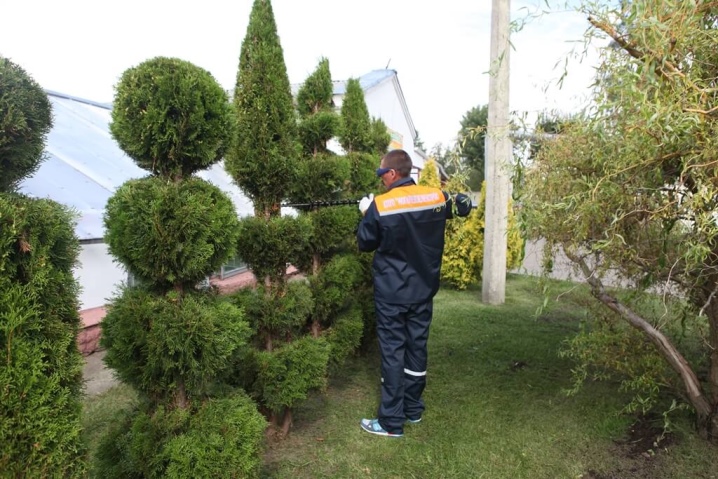
What and how to feed?
In the spring, you can treat the plant with Bordeaux liquid or copper sulfate. They allow you to protect the thuja from the invasion of insects, for example, aphids. Processing should be done on a dry day, after applying the composition, it is desirable that there is no rain, otherwise there will be no effect. When planting a seedling, fertilizer can be applied to the hole at the root. If such manipulations have taken place, then fertilizing the plant is not required throughout the year. After feeding is applied every year, it is advisable to use a complex mineral fertilizer.
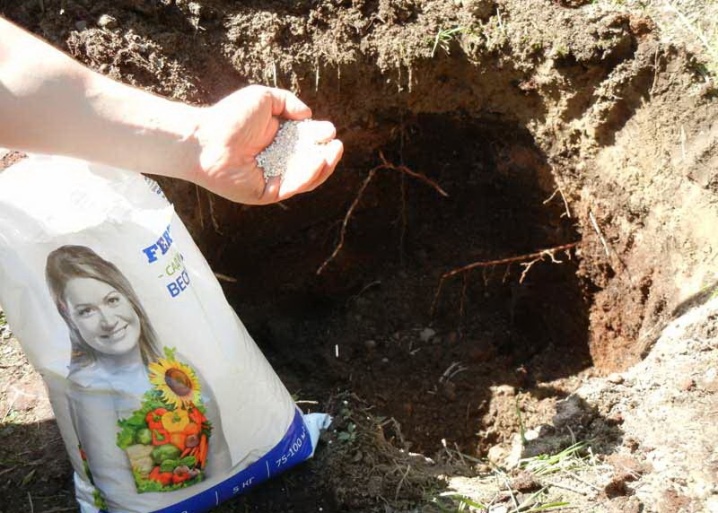
Fortified thujas do not need additional nutrition, but it allows them to look their best. The needles become brighter, the crown - wider. Growth stimulants are not needed, the thuja is already actively adding in width and height. Most gardeners reduce tree maintenance to timely watering and pruning. If the plant needs nutrients, then it is better to apply them in early spring, as soon as the last snow melts. Thanks to such feeding, active growth will start, which will improve the attractiveness of the tree.
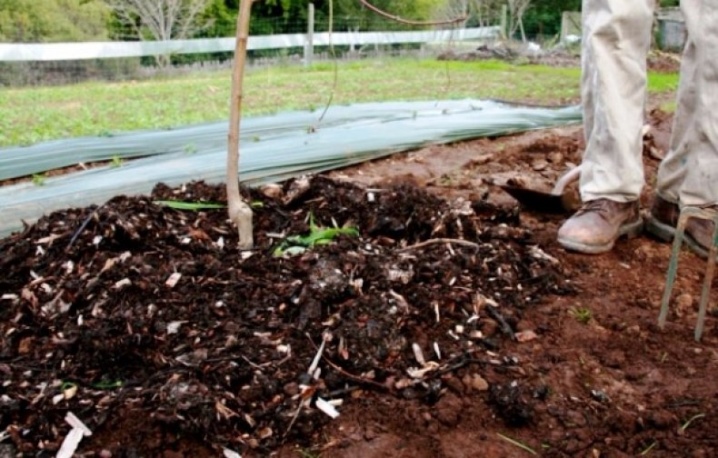
On the market and in specialized stores there are preparations created exclusively for conifers. They are advised to be used first. You can apply 1 tablespoon of ammonium nitrate to a bucket of water. Fertika and Zircon feeding proved to be quite good. The latter solution helps to improve the absorption of nutrients and moisture from the soil, which has a beneficial effect on the appearance of the thuja.

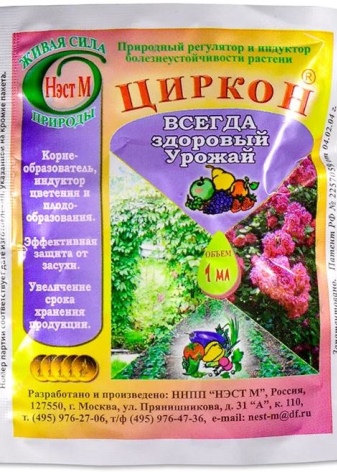
Diseases and pests
Thuja should be sprayed immediately when its shoots turn black or the needles turn brown. It is not always possible to revive a very neglected plant, so it dies. Spring treatment is considered the best prevention. Spraying is carried out with ready-made preparations, for example, "Rogor", "Karbofos". Their premature application to the crown avoids infection by insects and fungal infections. Thuja affected by aphids can be restored. Until the age of three, it is advised to use "Epin", as it forms a good immune system, thanks to which the plant is subsequently less sick.
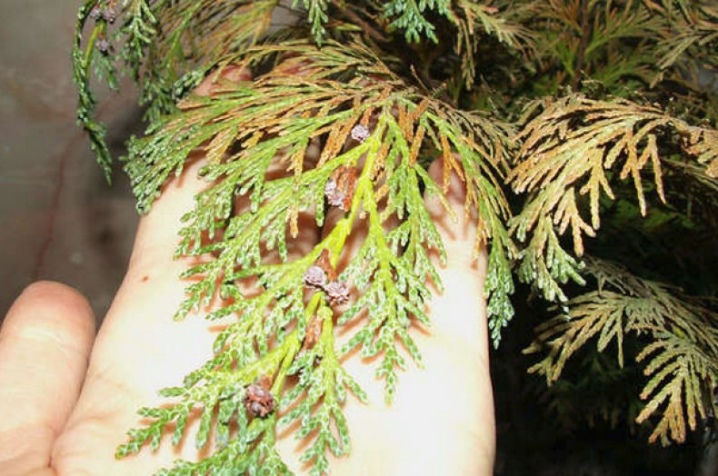
For information on how to properly care for thuja in spring, see the next video.



































































The comment was sent successfully.